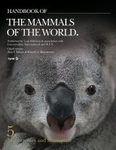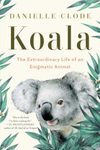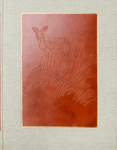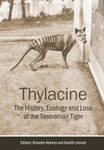By: Carolyn J Hogg(Editor), Samantha Fox(Editor), David Pemberton(Editor), Katherine Belov(Editor), Kate Warner(Foreword By)
334 pages, 16 plates with colour photos; b/w illustrations, b/w maps, tables
![Saving the Tasmanian Devil Saving the Tasmanian Devil]()
Click to have a closer look
About this book
Contents
Customer reviews
Biography
Related titles
About this book
The Tasmanian devil is threatened by Devil Facial Tumour Disease (DFTD), a transmissible form of cancer that has reduced the population by over 80%. Hunting, extreme climate events, vehicle collision and habitat destruction also put pressure on this endangered species. The recovery effort to save the Tasmanian devil commenced over 15 years ago as a collaborative initiative between the Tasmanian government, the Australian government, the Zoo and Aquarium Association Australasia, and many research institutions.
Saving the Tasmanian Devil documents the journey taken by partner organisations in discovering what DFTD is, the effect it has on wild devil populations, and the outcomes achieved through research and management actions. Chapters describe all aspects of devil conservation, including the captive devil populations, applied pathology, immunology and genetic research findings, adaptive management, and the importance of advocacy and partnerships. Saving the Tasmanian Devil will provide management practitioners and conservation scientists with insight into the complexities of undertaking a program of this scale, and will also be of value to researchers, students and others interested in conservation.
Contents
Foreword
About the editors
Contributing authors
1: Carnivore conservation: the importance of carnivores to the ecosystem, and the value of reintroductions
2: The Tasmanian devil: a uniquely threatened animal
3: Pathology and diagnostics of DFTD and other devil diseases
4: Revealing the origin and evolutionary trajectory of DFTD using genetics and genomics
5: Tasmanian devil immune genes and their function
6: Genetic tools: maintaining genetic diversity in the Tasmanian devil metapopulation
7: Microbiomes, pouches and milk: natural solutions?
8: Immune strategies to combat DFTD
9: Devils and disease in the landscape: the impact of disease on devils in the wild and on the Tasmanian ecosystem
10: Conservation status drives management: what is happening in wild populations and why?
Colour plates
11: DFTD is a killer but what about other threats?
12: Remote detection and monitoring methods for Tasmanian Devils
13: Wild devil recovery: managing devils in the presence of disease
14: Use of scent ecology to improve reintroduction outcomes: applications for Tasmanian devils
15: A One Plan Approach to saving the devil: population and habitat viability assessment
16: Managing a metapopulation: intensive to wild and all the places in between
17: Advocates and ambassadors: the devil is real
18: Managing and maintaining wild temperament and behaviours in captivity
19: Conservation introduction of Tasmanian devils to Maria Island: a managed response to DFTD
20: The depopulation and reintroduction of devils on the Forestier Peninsula
21: Captive research: working together for the common good
22: The road to recovery: a recipe for success?
23: Balancing the needs of government, academia, zoos, the community and media in the messaging to Save the Tasmanian Devil
24: Lessons learned and future directions
Appendices
Acronyms
Index
Customer Reviews
Biography
Carolyn J. Hogg is the Research Manager of the Australasian Wildlife Genomics Group at the University of Sydney. She has been working on the conservation of threatened species for over 20 years both in Australia and overseas. Working closely with academic and conservation management partners, she is developing better tools and technologies to integrate molecular genetics into real-time conservation management decisions.
Samantha Fox is a wildlife biologist with a focus on the conservation of threatened species. She is passionate about incorporating results from applied research into management decisions and has a strong collaborative emphasis in her work. While she has extensive field experience, Sam also manages a team of field staff and a number of large diverse projects. She is a strong believer in effective communication being key to successful outcomes.
David Pemberton is a wildlife biologist who has worked on a variety of wildlife management projects from seal interactions with fish farms to albatross bycatch on long liners. He is currently the Manager of the Save the Tasmanian Devil Program. He has published over 50 scientific papers and three books including co-authoring the book The Tasmanian Devil: A Unique and Threatened Animal.
Katherine Belov is the Professor for Comparative Genomics at the University of Sydney. She is a world leader in the genetics of immunity of Australian mammals and has developed new paradigms for the management of Australian wildlife populations threatened by disease. She has published over 150 papers on immunity and conservation.
By: Carolyn J Hogg(Editor), Samantha Fox(Editor), David Pemberton(Editor), Katherine Belov(Editor), Kate Warner(Foreword By)
334 pages, 16 plates with colour photos; b/w illustrations, b/w maps, tables



































